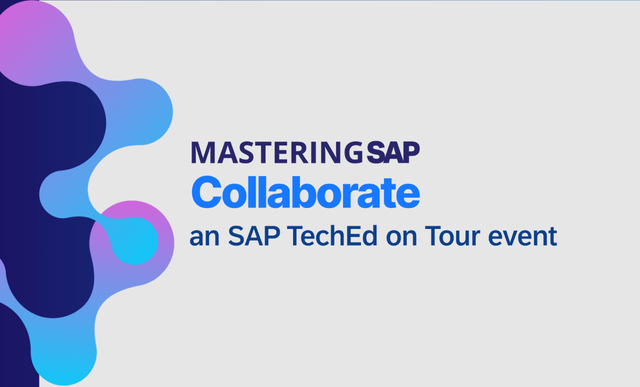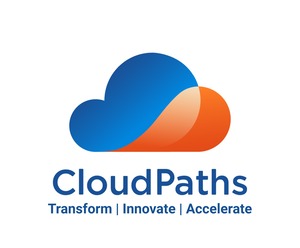SAP ABAP
Filter By
Browse By
- SAP Analytics and AI
- SAP Application Development and Integration
- All SAP Application Development and Integration
- SAP ABAP
- SAP ABAP Development Tools
- SAP ABAP Test Cockpit
- SAP API Management
- SAP BAPI
- SAP Basis
- SAP BRF
- SAP Business Application Studio
- SAP CMS
- SAP Design Studio
- SAP Development Tools
- SAP DevOps
- SAP EAI
- SAP EDI
- SAP Extension Suite
- SAP Fiori
- SAP Fiori Elements
- SAP Integration Suite
- SAP Low Code Application Development
- SAP Low Code Automation
- SAP Netweaver
- SAP Release Management
- SAP UI5
- SAP Web Application Server
- SAP Web IDE
- SAP Business Process Management
- SAP Center of Excellence
- SAP CIO
- SAP Customer Experience
- SAP Data and Data Management
- All SAP Data and Data Management
- SAP BW
- SAP BW/4HANA
- SAP Crystal Reports
- SAP Data Archiving
- SAP Data Center
- SAP Data Governance
- SAP Data Integration
- SAP Data Migration
- SAP Data Quality
- SAP Data Services
- SAP Data Strategy
- SAP Data Visualization
- SAP Data Warehouse Cloud
- SAP DMS
- SAP Document Control
- SAP EIM
- SAP ETL
- SAP ETL Tools
- SAP HANA
- SAP HANA Administration
- SAP HANA Deployment Infrastructure
- SAP HANA Studio
- SAP Master Data
- SAP Master Data Governance
- SAP MDM
- SAP Enterprise Architect
- SAP Enterprise Asset Management
- SAP ERP
- SAP Finance
- All SAP Finance
- SAP Accounting
- SAP AR AP
- SAP Asset Accounting
- SAP Billing Systems
- SAP BPC
- SAP BRIM
- SAP Cash Management
- SAP Central Finance
- SAP Controlling
- SAP COPA
- SAP Cost Center Accounting
- SAP Currency Risk
- SAP e-invoicing
- SAP FICO
- SAP Finance Automation
- SAP Advanced Financial Closing
- SAP Financial Consolidation
- SAP Financial Planning
- SAP FX Risk
- SAP General Ledger
- SAP Global Tax Management
- SAP Hyperion
- SAP Order to Cash
- SAP Payment Processing
- SAP Profitability Analysis
- SAP Rebate Management
- SAP S/4HANA Finance
- SAP SWIFT Compliance
- SAP Treasury Management
- SAP Universal Journal
- SAP Governance Risk and Compliance
- SAP Human Capital Management
- SAP Intelligent Technologies
- SAP Platform and Technology
- All SAP Platform and Technology
- SAP Business Technology Platform
- SAP Cloud
- SAP Cloud Connector
- SAP Cloud Integration Platform
- SAP Cloud Migration
- SAP Cloud Platform
- SAP Cloud Providers
- SAP Cloud Strategy
- SAP Digital Signature
- SAP Container Platform
- SAP HANA Enterprise Cloud
- SAP Digital Asset Management
- SAP Smart Forms
- SAP HEC
- SAP Digital Integration Hub
- SAP Hyperscalers
- SAP Infrastructure
- SAP Messaging
- SAP Quality and Testing
- SAP Security
- SAP Spend Management
- SAP Supply Chain Management
- All SAP Supply Chain Management
- SAP APO
- SAP Asset Management
- SAP Business Network
- SAP Digital Manufacturing Cloud
- SAP Digital Twin
- SAP EWM
- SAP IBP
- SAP Inventory Management
- SAP Label Printing
- SAP Logistics
- SAP Manufacturing
- SAP Manufacturing Automation
- SAP MES
- SAP MII
- SAP MM
- SAP MRO
- SAP MRP
- SAP Order Management
- SAP Plant Maintenance
- SAP PLM
- SAP Production Planning
- SAP S&OP
- SAP SD
- SAP SPM
- SAP Supply Chain Planning
- SAP Track and Trace
- SAP Transportation Management
- SAP System Administration
What Is SAP ABAP?
The SAP ABAP programming language allows organizations to process large amounts of data within SAP business solutions. Having a working knowledge of SAP ABAP code enables customization within a system, offering greater control over essential business functions. It is supported on the SAP NetWeaver ABAP application server platform.
What Is SAP ABAP?
The SAP ABAP programming language allows organizations to process large amounts of data within SAP business solutions. Having a working knowledge of SAP ABAP code enables customization within a system, offering greater control over essential business functions. It is supported on the SAP NetWeaver ABAP application server platform.
Predictions about the death of ABAP (Advanced Business Application Programming), SAP’s four-decade old programming language, have continually failed. ABAP has evolved to stay relevant through the waves of change such as object-oriented programming, Java, Webdynpro, SAP HANA, SAP Fiori, and cloud applications. With large SAP customers continuing to use ABAP, a new generation of programmers continue to join the passionate, senior cohorts of ABAP programmers.
History and Evolution
ABAP is a fourth-generation programming language that was introduced by SAP in the 1980s. It was created for the development and customization of SAP software. For many decades, it was the only language that could be used to customize or develop SAP software components. ABAP is a multi-paradigm programming language, meaning programmers can utilize procedural, object-oriented, and other programming principles. Programs written with ABAP can run alongside those based on other languages such as Java, JavaScript, and SAPUI5. ABAP has continued to thrive even as SAP acquired non-ABAP solutions. SAP has released ABAP on the cloud, enabling the extensibility of SAP solutions to the cloud. Now, ABAP is used to develop applications for SAP Fiori, SAP S/4HANA, SAP Business Technology Platform, etc.
Should You learn SAP ABAP?
Developing technical skills in SAP ABAP allows you to modify virtually all SAP solutions and even create web applications. SAP provides its users with an ABAP Learning Journey via SAP Press in the form of books, blog posts, and videos. These tips and tricks can help you hone work processes in SAP ABAP to maximize the effectiveness of your SAP landscape.
All SAP solutions up through SAP S/4HANA can be modified with ABAP code. This means that mastering ABAP gives you the capability to develop and modify reports, interfaces, forms, data conversations, and much more. Learning SAP ABAP gives users the technical ability and skills to master their SAP environment. It is the technology that underpins SAP’s traditional Business Suite, the flagship solution SAP S/4HANA, and many others. In a competitive business environment, it is vital for organizations to have talent with fluency in SAP ABAP.
SAP says its ABAP programming language runs in over 100,000 customer systems, offering users enterprise-ready business applications that can help reduce costs as it is already integrated with SAP. With a reported 4.5 million registered ABAP developers, it is essential to have access to the innovation capabilities that SAP ABAP provides.
SAP ABAP combines SAP’s in-memory database SAP HANA with the digital user experience through SAP Fiori. This technology is consistently updated and extended to maximize its utility and functionality for added application development capabilities and new business scenarios.
How ABAP Works
As a multi-paradigm programming language, SAP ABAP allows programmers to use both procedural and object-oriented principles. This allows programmers to follow the programming model that works the best for them and for their project as well.
Each ABAP program operates within the ABAP Runtime environment, which processes statements and handles events and the flow logic of screens. Though it is SAP’s primary programming language, some applications that SAP acquired may not fully run on ABAP in SAP. However, these products will still come into contact with ABAP when they interface with a central ABAP-based system like an SAP ERP.
Since its release in the 1980s, SAP ABAP has consistently changed and evolved to best meet the needs of SAP users and organizations. To that end, SAP provides users with a set of tools and programs known as the ABAP Workbench. This development environment allows users to test, develop, and execute new programs within SAP, as well as edit existing ABAP programs, write report programs, function modules, and module pools.
This functionality helps programmers create a simple graphical user interface, handle the complete ABAP application development lifecycle, communicate between desktop applications, and access all programming objects. As it is feature-driven, the execution of apps will be affected by user actions and system events.
Before users can start working on their business processes and applications, the SAP database must first be filled. There are a handful of different methods to transfer data into the system. These methods should be weighed based on both the volume and the complexity of the data at hand that is set to be moved over. Data can also be transferred between SAP systems or from a non-SAP system to an SAP system that relies on the SAP ABAP language.
SAP ABAP also offers users different options for writing general programming, using the capabilities of the R/3 system. Users can either execute programs online or, if they would prefer, those programs can also be executed in the background. Users may opt for jobs that run in the background so they can be scheduled at different intervals.
Looking Ahead
SAP made a big move in releasing ABAP for the cloud to ease the migration and maintenance of existing applications to the cloud via the ABAP environment in the SAP Business Technology Platform. ABAP developers can now leverage their seasoned expertise on the cloud with only some training in the ABAP RESTful application programming model. They can do this despite some substantial differences between the new and old ABAP. The most popular use of ABAP for the cloud is adding custom functionality to SAP S/4HANA installation on the cloud. There are restrictions on this capability, with ABAP cloud applications only having limited access to data in the core SAP S/4HANA through a set of OData services.
Clients can be opportunistic in their application development and integration strategy with ABAP, along with other options such as Java, Python, node.js, HTML5, etc., based on their software portfolio, developers’ skillsets, and specific use cases. In addition, SAP customers with complicated customizations are now aiming for a clean core. Modern approaches allow for decoupling customizations from the core business systems with cloud extensions. Clients also aim for clear separations between SAP and third-party extensions.
In summary, ABAP can continue to play a major role in the application strategy. However, organizations must invest in upskilling and select the programming model that suits them best. They must also aim for a clean core to deliver nimble and rapid applications that impact the business.
Join SAPinsider to access opportunities for networking and engagement in the dynamic SAP ecosystem. As a member, you will have access to a wealth of valuable resources and content tailored to SAP technologies and best practices like the latest research reports, articles, webinars, and events that will keep you informed and ahead of the curve.
SAPinsider membership grants you exclusive access to in-depth analyses, expert insights, and practical guidance that will empower you to navigate the ever-evolving SAP landscape with ease. SAPinsider membership will enable you to remain one step ahead and harness the latest trends, innovations, and strategies to drive your own powerful digital transformations, optimize your SAP investments, and unlock business success.
499 results
-

- SAP AI
 Premium
Premium
Transforming ABAP Developers in the GenAI ERA of RISE with SAP
Click Here to View the Session Deck As organizations transition from traditional SAP landscapes to modern, cloud-based architectures, SAP developers are at the forefront of this transformation. Their journey involves leveraging SAP ABAP expertise, while embracing clean core strategies, integrating seamlessly with cloud services, and building on their existing transactional knowledge, to drive business value...…
-

 Premium
Premium
Use This ABAP Program to Download SAP Table Data and Table Structures
Reading time: 13 mins
See how to download an SAP table structure (i.e., the data types of each field), convert it into data types of the underlying database, and transfer table data with a large number of records. Use Object Linking and Embedding objects to concoct the database, create the table, and transfer data. This method uses Microsoft SQL...…
-

 Premium
Premium
Monitor Your Entire SAP Landscape From One Central Point
Reading time: 13 mins
ManagerLearn how to centrally monitor SAP landscapes by setting up and using SAP Solution Manager’s Computing Center Management System (CCMS) functionality. Key Concept Computing Center Management System (CCMS) allows continuous monitoring of SAP R/3 and SAP ERP systems at the operating system, network, database, and application levels. This is SAP’s central infrastructure for monitoring system...…
-
-

 Premium
Premium
How to Dynamically Load Multiple Files from SAP NetWeaver Application Server (Unix)
Reading time: 7 mins
Save time and avoid risks by using this ABAP program and process chains to load multiple flat file data into SAP NetWeaver BW. The code provided is for a Unix environment. Key Concept All the data stored in SAP NetWeaver BW is not necessarily sourced from SAP ERP Central Component (SAP ECC). Therefore, you might...…
-

 Premium
Premium
3 Steps for Creating Efficient Update Rules
Reading time: 16 mins
With a little ABAP code, optimize your data loads with efficient update rules. Key Concept Update rules connect InfoSources to data targets. They allow you to filter, transform, aggregate, and integrate the data passing through them. In the BW world, tables often occupy much of developers’ time, as they analyze dimensional design, key fields versus...…
-

 Premium
Premium
HR’s 5 Reporting Options in R/3: How Do You Choose?
Reading time: 17 mins
Satisfying your company’s Human Resource reporting requirements is always a challenge, beginning with the assessment process through the selection of the right reporting strategy. Deciding which method is best begins with a proper assessment of the reporting tools available. Author and Executive SAP Consultant Danielle Larocca compares reporting tools available in your HR module: standard...…
-

 Premium
Premium
Use SAP Query Drill-Down Reporting to View HR Master Data Infotype Records
Reading time: 11 mins
Learn how to create true drill-down functionality with SAP query reporting. Using this work-around you can get master data details from the underlying infotype records of employees. Key Concept SAP query provides a drill-down functionality that enables the main query to execute one or more other queries, reports, or transaction codes. Using this functionality enables...…
-
-

 Premium
Premium
Avoid Manual Effort by Implementing an Alphanumeric Generator in ABAP
Reading time: 14 mins
ITAlphanumeric numbers can be saved in a database at the successful completion of an SAP transaction. Later, you can use the same number to identify a unique record. A use case shows how to generate alphanumeric numbers using an ABAP function module, thus saving manual work and reducing errors. Key Concept Alphanumeric refers to combinations...…
-

 Premium
Premium
Configure ABAP Web Dynpro Salary Statements in Enhancement Package 5.0 and Up to Allow Employees to View Paychecks
Reading time: 10 mins
Learn how to activate the ABAP Web Dynpro employee self-services (ESS) application for the pay statement in both the SAP Enterprise Portal and NetWeaver Business Client (NWBC) in enhancement package 5. Beginning with enhancement package 5, SAP changed the salary statement format from Java Web Dynpro to ABAP Web Dynpro. This change applies to enhancement...…
-

 Premium
Premium
Three Methods for Editing DataStore Object Data Without Altering Source Data
Reading time: 17 mins
DataStore object data usually updates when the user or system generates or changes source system documents. The data flows into SAP BW via a full load or delta queue extract. Unfortunately, the real world sometimes intrudes on this ideal scenario and requires you to edit data in BW directly. Discover the pros and cons of...…
Become a Member
Unlimited access to thousands of resources for SAP-specific expertise that can only be found here.
Become a Partner
Access exclusive SAP insights, expert marketing strategies, and high-value services including research reports, webinars, and buyers' guides, all designed to boost your campaign ROI by up to 50% within the SAP ecosystem.
Upcoming Events
-

Mastering SAP Collaborate, an SAP TechEd on Tour event
November 12 - 14, 2025
Sydney, New South Wales
Australia
View Event
Related Vendors
Your request has been successfully sent

